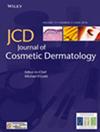摘要
背景 本研究探讨了细胞外囊泡(EVs)在皮肤再生和年轻化中的潜力。细胞外小泡是由各种类型细胞释放的纳米级囊泡,在细胞间通信中发挥着至关重要的作用。 目的 重申血液中的外泌体在细胞间通信中的关键作用及其在皮肤组织再生中的潜力,利用现有研究(包括人体数据),倡导将外泌体作为皮肤健康的一种可行的无细胞疗法。 方法 该研究采用一种新颖的分离技术,结合 PEG 和右旋糖酐以及超速离心法,从血浆中提取外泌体。包括 NTA、AFM、Cryo-TEM 和 FC 在内的表征技术证实了 EVs 的成功分离和表征。 结果 研究表明,血液中的 EVs 对小鼠和人体模型中成纤维细胞的增殖、胶原蛋白和弹性蛋白的生成有积极作用。尽管取得了进展,但在获得质量和浓度一致的 EVs 方面仍存在挑战。研究结果证明了 EVs 与皮肤健康的临床相关性,并提出了在皮肤年轻化方面的潜在应用。研究还讨论了未来的研究方向和研究局限性,有助于加深对基于 EVs 的疗法的理解。

Background
This study investigates the potential of extracellular vesicles (EVs) in skin regeneration and rejuvenation. EVs, nanoscale vesicles released by various cell types, play a crucial role in intercellular communication.
Objective
To reaffirm the pivotal role of blood-derived exosomes in intercellular communication and their potential for skin tissue regeneration, leveraging existing research, including human data, to advocate for exosomes as a viable cell-free therapy for skin health.
Methods
The study employs a novel isolation technique combining PEG and Dextran with ultracentrifugation to extract EVs from plasma. Characterization techniques, including NTA, AFM, Cryo-TEM, and FC, confirm the successful isolation and characterization of EVs.
Results
The study demonstrates positive effects of blood-derived EVs on fibroblast proliferation, collagen, and elastin production in murine and human models. Despite advancements, challenges persist in obtaining consistent EVs quality and concentration. The findings support the clinical relevance of EVs in skin health and suggest potential applications for skin rejuvenation. Future research directions and study limitations are also discussed, contributing to the evolving understanding of EVs-based therapies.

 求助内容:
求助内容: 应助结果提醒方式:
应助结果提醒方式:


